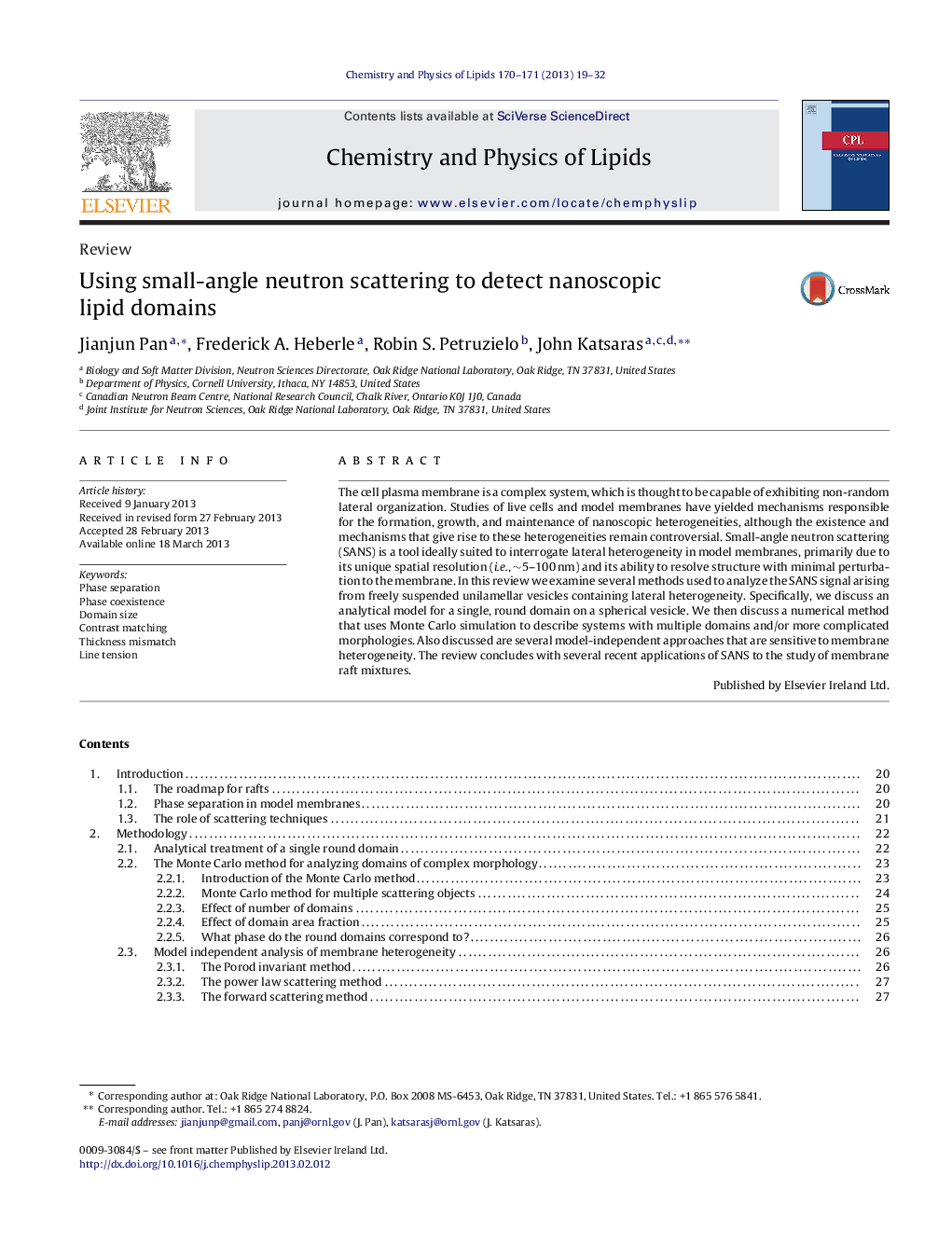| Article ID | Journal | Published Year | Pages | File Type |
|---|---|---|---|---|
| 1251785 | Chemistry and Physics of Lipids | 2013 | 14 Pages |
•SANS can detect nanoscopic domains with minimal perturbation.•Domain size and morphology can be retrieved by analyzing SANS signal.•SANS has been successfully applied to the study of membrane raft mixtures.
The cell plasma membrane is a complex system, which is thought to be capable of exhibiting non-random lateral organization. Studies of live cells and model membranes have yielded mechanisms responsible for the formation, growth, and maintenance of nanoscopic heterogeneities, although the existence and mechanisms that give rise to these heterogeneities remain controversial. Small-angle neutron scattering (SANS) is a tool ideally suited to interrogate lateral heterogeneity in model membranes, primarily due to its unique spatial resolution (i.e., ~5–100 nm) and its ability to resolve structure with minimal perturbation to the membrane. In this review we examine several methods used to analyze the SANS signal arising from freely suspended unilamellar vesicles containing lateral heterogeneity. Specifically, we discuss an analytical model for a single, round domain on a spherical vesicle. We then discuss a numerical method that uses Monte Carlo simulation to describe systems with multiple domains and/or more complicated morphologies. Also discussed are several model-independent approaches that are sensitive to membrane heterogeneity. The review concludes with several recent applications of SANS to the study of membrane raft mixtures.
